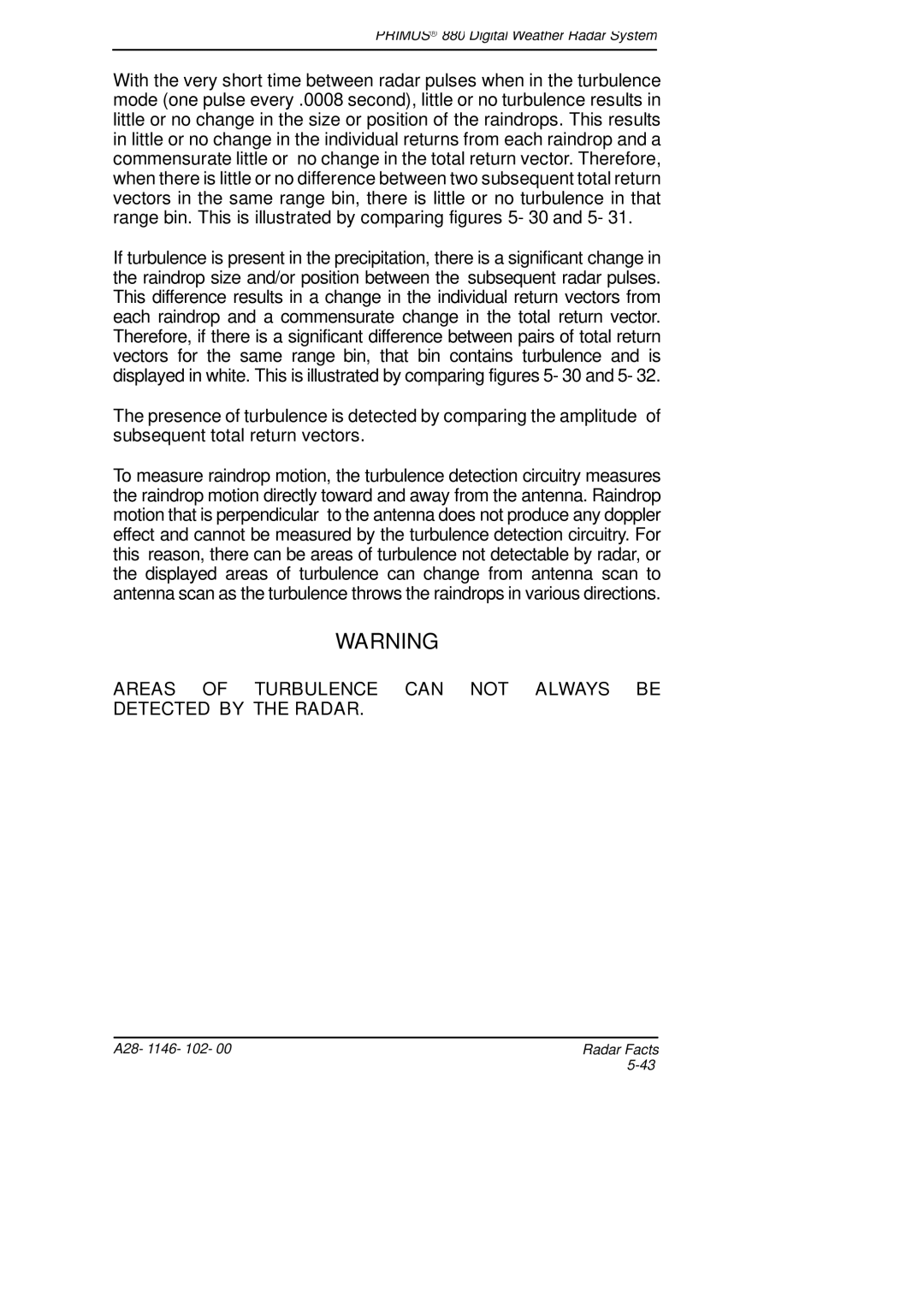
PRIMUSr 880 Digital Weather Radar System
With the very short time between radar pulses when in the turbulence mode (one pulse every .0008 second), little or no turbulence results in little or no change in the size or position of the raindrops. This results in little or no change in the individual returns from each raindrop and a commensurate little or no change in the total return vector. Therefore, when there is little or no difference between two subsequent total return vectors in the same range bin, there is little or no turbulence in that range bin. This is illustrated by comparing figures 5- 30 and 5- 31.
If turbulence is present in the precipitation, there is a significant change in the raindrop size and/or position between the subsequent radar pulses. This difference results in a change in the individual return vectors from each raindrop and a commensurate change in the total return vector. Therefore, if there is a significant difference between pairs of total return vectors for the same range bin, that bin contains turbulence and is displayed in white. This is illustrated by comparing figures 5- 30 and 5- 32.
The presence of turbulence is detected by comparing the amplitude of subsequent total return vectors.
To measure raindrop motion, the turbulence detection circuitry measures the raindrop motion directly toward and away from the antenna. Raindrop motion that is perpendicular to the antenna does not produce any doppler effect and cannot be measured by the turbulence detection circuitry. For this reason, there can be areas of turbulence not detectable by radar, or the displayed areas of turbulence can change from antenna scan to antenna scan as the turbulence throws the raindrops in various directions.
WARNING
AREAS OF TURBULENCE CAN NOT ALWAYS BE DETECTED BY THE RADAR.
A28- 1146- 102- 00 | Radar Facts |
|
